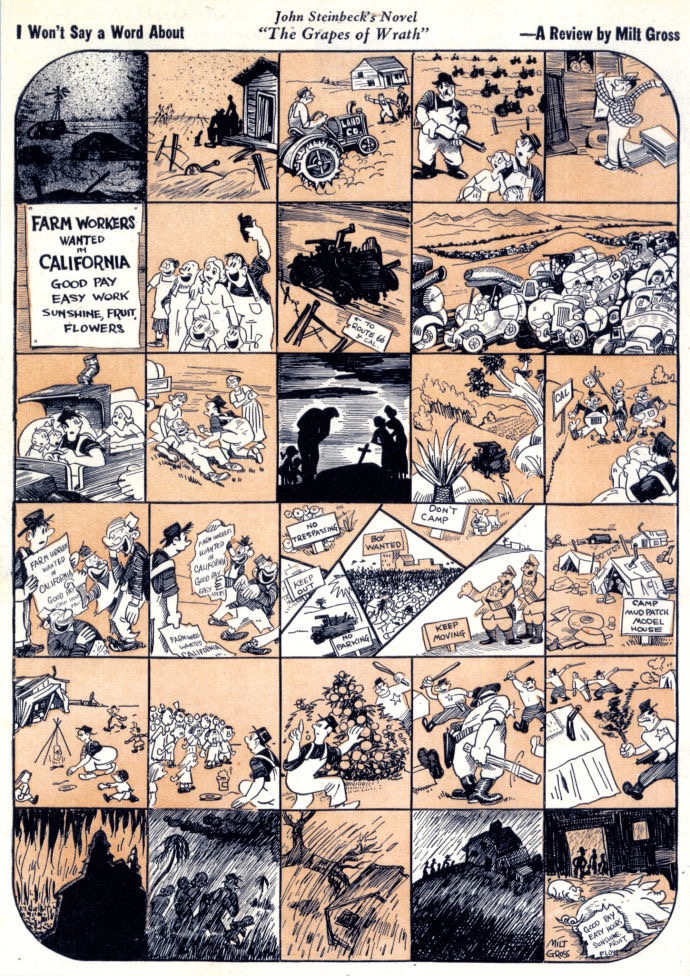§ The San Diego Union Tribune runs a pair of op-eds on the hot topic for fall: voting to build a new downtown stadium for the football Chargers. Anti-stadium forces make a bold claim: How a Chargers stadium jeopardizes San Diego Comic-Con. This is based on CCI’s stated opposition to the lan to build a football stadium with, oh, a bonus convention center thrown in. Comic-Con wants a contiguous expansion, not another facility down the road a piece. This op-ed doesn’t really show how the new stadium would hurt Comic-Con, but they do state why the big show important to the local economy, and says higher hotel room taxes could drive away other events:
The hotel tax revenue Comic-Con generates pays for street repairs, police officers and other services in every San Diego neighborhood.
That’s what the hotel tax does. It’s the third largest source of revenue for the city. It pays to repair streets, hire 911 dispatchers, fund after-school programs, and on and on. We have a responsibility to protect this valuable funding source.
We should not do anything that jeopardizes this revenue stream and that includes raising it to pay for the lion’s share of a $1.8 billion stadium project. Dean Spanos’ plan would cut San Diego’s tourism marketing budget in half while increasing our hotel tax by more than 50 percent to 16.5 percent, giving San Diego one of the highest hotel taxes in the country. Conventions operate on a budget and some would simply relocate to cities that don’t break their budgets. Tourism marketing — our investment in attracting conventions and tourists — should not be sacrificed to pay for a stadium that brings the city little to no economic benefit.
The other side includes Chargers owner Dean Spanos who says all will be well:
The Chargers and the NFL will contribute $650 million in private investment to complete this new facility — one of the largest contributions ever made by the NFL and a team in a market like ours. And we have included $350 million of hotel room tax for integrating the convention center into the stadium, which not coincidentally, is the same amount the city and county were proposing in general fund dollars pledged to the NFL last year.
The second feature of the measure is the vision for a new governing structure — or Joint Powers Authority — to oversee the design, construction, operation and maintenance of the facility, along with the creation of a dedicated funding mechanism to collect taxes from visitors to pay the bonds and other project costs.
I must confess, even as a veteran Comic-Con analyst, all this hotel room tax talk made my eyes glaze over. For the anti-Stadium forces, there’s a petition and information site: No Downtown Stadium – Jobs and Streets First!
The matter is up for a public vote in November, and I don’t have much of a feel for how it will go, but I’m sure there will be a lot of talk over the next few months.
§ Charlotte Finn asks Did Fandom Kill the All-Ages Superhero Comic? which is more about the adult level violence and themes of Big Two books taking characters kids might like and mixing them up with violence. But last time I looked, kids comics were doing fine. DC hasn’t really rolled out too many all-ages books, but a new Balthazar and Franco book was just announced, and DC Super Hero Girls seems to be all the rage, so methinks the answer is…no.
§ Editor Heather Antos dishes out some frank talk freelancers should discard at their own risk.
§ For all of you bemoaning the CBR changes, it does seem they are reintegrating a lot of old content from Robot 6, you just have to know where to find it. For instance, here’s the archives of comics a..m., Brigid Alverson’s much liked column. So let it roll out.
§ Can a 1-page comic be a graphic novel? Art Spiegelman sort of thinks they can, I think they are just good, dense reads, but, OMG…MILT GROSS.
§ Here is a useful service piece: Comic Con Palm Springs: What to know before you go, because there are a lot of things you SHOULD NOT BRING.
Anyone planning to ride into Comic Con Palm Springs on a hoverboard, with helium balloons and a real weapon, while wearing Google Glass and pushing their pet in an oversized stroller – think again, because you are not welcome. As with other comic cons and big venue events, there are rules and regulations in place so everyone can be have a good time and be safe.
§ This piece in the Chattanooga Free Press by Casey Phillips on “fringe comics” getting adapted for movies and tv includes a mind boggling list of comics properties that have been or will be viewable on the streaming device of your choice. How did we get here? I’ve been asking if this trend will burn out for a decade and it literally seems to be getting bigger and bigger. Is this just how life will be from here on out? There really is a thoughtful analysis of why superhero movies and TV shows work so well at this point in time waiting to be made, but I will keep waiting.






1) There’s a history of tax initiatives on the ballot in San Diego, and in other cities who voted on stadium funding. California tax ballots need 66% approval. Current polling is 25%.
2) Not to argue with Mr. Spiegelman, but a graphic novel is a format, like a book. He has used the “comics with a spine” analogy himself. Can a one-page comic tell a full story? YES. Is it any different than a Sunday comic strip? NO. But it’s all comics, just like a haiku and an epic poem are poetry… it’s just length, certain restrictions, conventions.
A graphic novel is a book. Can you have a two-sentence novel? No… it’s a story, but not a novel. Same with a broadsheet comic. You could have a short story collection, even bridge those single pages together into a novel, like Asimov’s “I, Robot”. But then the work has been altered, adapted.
This is why I wonder why there aren’t more comic strip categories at the Eisners.
Carl Barks’ one-pagers are no different than Watterson’s or King’s or Sterrett’s Sunday comics.
There aren’t even many comic strip creators in the Hall of Fame…
“so methinks the answer is…no”
Unless, you know, you think kids should be able to read actual Spider-Man or Supergirl comics and not some “just for kids” versions. Or maybe you wonder about supposed grown ups who want to read childish stories with fairly ridiculous levels of violence and other “adult” content.
Mike
Spiegelman’s comments do illustrate that there is a need for a standardized definition for what constitutes a ‘graphic novel’. I was skeptical that the term was appropriate when it was being applied to those slim comics albums that DC and Marvel were releasing in the 1980s or for short works such as Batman: The Killing Joke. I’ve run across at least one individual who stubbornly refused to count anything that was first published serially, Including: Watchmen; Marvels; Camelot 3000; etc. But you can’t fix stupid.
If anybody is interested in what the creator of the term “Graphic Novel” meant when he came up with it, I have recently republished my interview with Richard Kyle here: http://jamiecoville.com/blog/blog/2016/08/15/richard-kyle-interview/
Thanks, Jamie! Mr. Kyle’s explanation is very close to the thoughts about graphic novels and stories that I was posting a few years ago. Both length and complexity need to be considered. And a graphic novel is ideally a single, long-form story as opposed to a collection of shorter works.
Comments are closed.